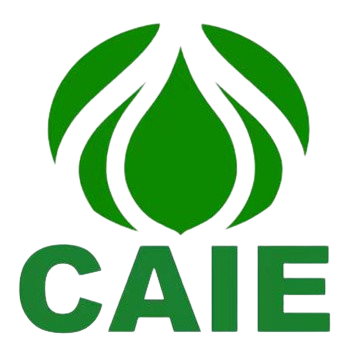Aroma yang baru saja dipanen bawang putih sudah cukup untuk membuat para pencinta makanan jatuh hati. Namun bagi mereka yang berkecimpung dalam bisnis yang menghadirkan kuliner penting ini ke meja-meja makan di seluruh dunia, mengimpor bawang putih untuk distribusi grosir adalah usaha yang memiliki banyak sisi, sebuah tarian yang rumit antara logistik, peraturan, dan pemahaman pasar. Baik Anda seorang importir berpengalaman yang ingin memperluas kerajaan bawang putih Anda atau calon wirausahawan yang ingin memasuki pasar yang sangat kompetitif ini, panduan komprehensif ini akan membekali Anda dengan pengetahuan untuk menavigasi seluk-beluk impor bawang putih.
1. Mencari Sumber Bawang Putih Anda: Dunia Penuh Pilihan Menanti
Langkah pertama dalam perjalanan mengimpor bawang putih adalah mencari bawang putih berkualitas tinggi dari pemasok terkemuka di seluruh dunia. Membangun hubungan yang kuat dengan pemasok Anda sangatlah penting untuk memastikan kualitas yang konsisten, praktik pengadaan yang etis, dan komunikasi yang dapat diandalkan. Berikut ini adalah beberapa daerah penghasil bawang putih terkemuka dan apa yang membuat mereka menonjol:
- Cina: Raksasa Bawang Putih Dominasi China di pasar bawang putih global tidak dapat disangkal. Kapasitas produksinya yang besar, harga yang kompetitif, dan kemampuannya untuk memasok berbagai jenis bawang putih, mulai dari bawang putih standar hingga varietas khusus seperti bawang putih tunggal dan bawang putih hitam, membuatnya menjadi sumber yang menarik bagi para importir di seluruh dunia. Namun, menavigasi jaringan pemasok China yang luas membutuhkan ketekunan. Uji tuntas yang menyeluruh, termasuk memverifikasi sertifikasi, melakukan audit pemasok, dan menetapkan ekspektasi kualitas yang jelas, sangat penting untuk memastikan kemitraan yang sukses.
- Spanyol: Di mana Cita Rasa Menjadi yang Tertinggi Spanyol, khususnya wilayah Castile-La Mancha, memiliki tempat khusus di hati para penikmat bawang putih. Bawang putih Spanyol, yang sering dicirikan dengan garis-garis ungu dan rasa yang kuat, dihargai karena ukuran siungnya yang lebih besar dan kualitasnya yang luar biasa. Bawang putih ini menjadi favorit di kalangan koki dan konsumen cerdas yang memprioritaskan rasa dan bersedia membayar mahal. Saat membeli dari Spanyol, memahami nuansa varietas bawang putih Spanyol yang berbeda, seperti "Ungu Las Pedroñeras" yang terkenal, dapat memberi Anda keunggulan di pasar.
- Argentina: Menjembatani Benua Amerika Argentina telah muncul sebagai pemasok bawang putih yang signifikan, terutama untuk wilayah Amerika. Lokasinya yang strategis memungkinkan waktu pengiriman yang lebih singkat dan biaya transportasi yang lebih rendah dibandingkan dengan sumber dari benua lain. Bawang putih Argentina dikenal dengan varietas putihnya, yang sering kali disukai karena keserbagunaannya dalam berbagai masakan. Membangun hubungan dengan pemasok Argentina dapat menjadi sumber bawang putih berkualitas tinggi yang dapat diandalkan bagi para importir yang ingin melayani pasar Amerika Utara dan Selatan.
- Di luar Tiga Besar: Menjelajahi Asal Usul Bawang Putih Khusus Dunia bawang putih sangat luas dan beragam, menawarkan banyak sekali pilihan rasa dan sumber di luar pemain utama. India, dengan varietas bawang putih pedas yang unik dan disukai dalam masakan Asia Tenggara dan India, memberikan peluang bagi para importir yang ingin memenuhi pasar etnis tertentu. Meksiko, yang terkenal dengan bawang putihnya yang dipanen di awal musim, dapat menyediakan pasokan yang berharga saat daerah lain sedang dalam masa panen. Bahkan Amerika Serikat, dengan sektor bawang putih organik yang lebih kecil namun terus berkembang, menawarkan peluang bagi para importir yang mencari bawang putih yang ditanam di dalam negeri dan diproduksi secara berkelanjutan.
2. Menavigasi Lanskap Regulasi: Memastikan Pelayaran yang Lancar
Mengimpor bawang putih, seperti halnya produk pertanian lainnya, melibatkan kepatuhan terhadap serangkaian peraturan dan standar yang rumit yang dirancang untuk melindungi kesehatan konsumen, memastikan praktik perdagangan yang adil, dan menjaga integritas pertanian suatu negara. Berikut ini adalah pertimbangan regulasi utama:
- Izin dan Lisensi Impor: Pintu Gerbang Anda untuk Berdagang Bahkan sebelum Anda berpikir untuk memasukkan bawang putih ke negara Anda, Anda harus memahami dunia perizinan dan lisensi impor. Ini bukan sekadar formalitas; ini adalah persyaratan hukum yang bervariasi tergantung pada peraturan negara Anda, asal bawang putih, dan volume yang ingin Anda impor. Berkonsultasi dengan otoritas bea cukai setempat atau meminta bantuan dari pialang bea cukai berlisensi sangat disarankan. Mereka dapat memandu Anda melalui persyaratan khusus, memastikan Anda memiliki dokumen yang diperlukan sebelum pengiriman bawang putih Anda berlayar.
- Sertifikat Fitosanitari: Melindungi Kesehatan Pertanian Bayangkan sebuah dunia di mana satu pengiriman produk yang terkontaminasi dapat membawa hama atau penyakit yang menghancurkan, yang dapat merusak hasil panen suatu negara. Di situlah peran sertifikat phytosanitary. Sertifikat ini, yang dikeluarkan oleh otoritas kesehatan tanaman negara pengekspor, berfungsi sebagai paspor untuk bawang putih Anda, yang memverifikasi bahwa bawang putih tersebut telah melalui pemeriksaan yang ketat dan bebas dari organisme berbahaya. Memperoleh dan memverifikasi dengan cermat sertifikat ini tidak dapat ditawar lagi, melindungi reputasi bisnis Anda dan kesehatan pertanian negara Anda.
- Standar Keamanan Pangan: Dari Pertanian hingga ke Garpu Di era dengan kesadaran yang semakin tinggi tentang keamanan pangan, konsumen mengharapkan, dan berhak mendapatkan, jaminan bahwa makanan yang mereka konsumsi aman. Mengimpor bawang putih memiliki tanggung jawab untuk mematuhi standar keamanan pangan yang ketat. Standar ini mencakup berbagai faktor, termasuk tingkat residu pestisida yang diizinkan, persyaratan pelabelan yang memberikan informasi yang jelas dan akurat kepada konsumen, serta peraturan khusus yang terkait dengan impor dan penanganan bawang putih. Selalu mengikuti perkembangan informasi tentang standar-standar ini dan menerapkan langkah-langkah kontrol kualitas yang kuat di seluruh rantai pasokan Anda sangat penting untuk menjaga kepercayaan konsumen dan melindungi reputasi merek Anda.
- Klasifikasi Tarif dan Bea Masuk: Harga Perdagangan Global Mengimpor barang dari negara lain sering kali dikenakan biaya tambahan di luar harga pembelian - tarif. Bawang putih memiliki klasifikasi tarif tertentu, yang menentukan bea masuk yang harus Anda bayarkan. Klasifikasi dan bea masuk ini bisa sangat spesifik, bervariasi berdasarkan faktor-faktor seperti negara asal, apakah bawang putih itu segar atau sudah diproses, dan bahkan jenis bawang putih (misalnya, bawang putih yang sudah dikupas mungkin memiliki tarif yang berbeda dengan umbi bawang putih utuh). Memahami klasifikasi ini dan menghitung bea masuk yang berlaku secara akurat sangat penting untuk mengelola biaya impor dan menetapkan harga yang kompetitif untuk bawang putih Anda.
3. Logistik dan Transportasi: Perjalanan dari Kebun ke Gudang
Perjalanan dari ladang bawang putih di belahan dunia lain ke gudang Anda adalah balet logistik, yang membutuhkan koordinasi yang cermat, perhatian terhadap detail, dan pemahaman tentang keseimbangan yang rumit antara kecepatan, biaya, dan menjaga kualitas kargo Anda yang berharga.
- Memilih Moda Transportasi yang Tepat: Sebuah Tindakan Penyeimbang Memilih metode transportasi yang optimal untuk bawang putih Anda mirip dengan memilih pasangan dansa yang tepat - metode ini harus sesuai dengan kebutuhan dan gaya Anda.
- Angkutan Laut: Pekerja Keras Ekonomi: Bagi importir yang mengangkut bawang putih dalam jumlah besar, angkutan laut sering kali menjadi pilihan yang paling hemat biaya. Namun, prosesnya lebih lambat, membutuhkan kesabaran dan perencanaan yang matang untuk mengakomodasi waktu transit yang lebih lama.
- Angkutan Udara: The Swift Waltz: Ketika waktu menjadi sangat penting, seperti ketika mengimpor bawang putih segar untuk memenuhi lonjakan permintaan pasar atau memanfaatkan peluang yang sempit, angkutan udara menjadi pilihan utama. Ini adalah cara tercepat untuk mengangkut bawang putih Anda, tetapi seperti tarian yang cepat berlalu, biayanya pun lebih mahal.
- Transportasi Truk: Dua Langkah Regional: Bagi importir yang memasok bawang putih dari negara tetangga atau di dalam benua, transportasi truk menawarkan opsi yang praktis dan berpotensi lebih gesit. Truk dapat memberikan fleksibilitas yang lebih besar dalam hal rute dan jadwal pengiriman dibandingkan dengan angkutan laut dan bahkan mungkin lebih cepat untuk jarak yang lebih pendek.
- Kontrol Suhu dan Pengemasan: Menjaga Esensi Bawang Putih Bawang putih, terutama bawang putih segar, adalah bunga yang lembut, dan menjaga kualitasnya selama perjalanan adalah yang terpenting.
- Wadah Berpendingin: Ruang Serbaguna dengan Pengatur Suhu: Untuk perjalanan yang lebih panjang, terutama melintasi lautan dan melalui berbagai iklim, wadah berpendingin sangat penting. Wadah ini berfungsi seperti ballroom yang dikontrol oleh iklim, menjaga suhu dan tingkat kelembapan yang optimal untuk memperlambat pembusukan dan menjaga kesegaran bawang putih Anda.
- Ventilasi yang tepat: Membiarkan Bawang Putih Anda Bernafas: Bahkan di dalam kontainer pengiriman, bawang putih perlu bernapas. Memastikan ventilasi yang memadai di dalam kontainer atau kemasan sangat penting untuk mencegah penumpukan uap air, yang dapat menyebabkan pertumbuhan jamur dan pembusukan. Anggap saja Anda memberi bawang putih Anda ruang untuk bernapas agar tetap segar selama perjalanan.
- Kemasan Pelindung: Melindungi dari Benturan di Jalan: Perjalanan dari kebun ke gudang bisa jadi tidak mulus. Menggunakan kotak, peti, atau kantong jaring yang kokoh yang dirancang untuk pengangkutan hasil panen akan membantu melindungi umbi bawang putih Anda dari memar, hancur, atau kerusakan lainnya selama penanganan dan pengangkutan.
- Asuransi dan Manajemen Risiko: Melindungi Investasi Anda Dalam koreografi pengiriman internasional yang rumit, kejadian tak terduga dapat terjadi - penundaan, penanganan yang kasar, fluktuasi suhu, atau bahkan keadaan yang tak terduga seperti kecelakaan atau bencana alam. Memiliki asuransi kargo merupakan langkah penting dalam mengelola risiko-risiko ini. Asuransi ini memberikan perlindungan finansial untuk pengiriman bawang putih Anda yang berharga, memberikan ketenangan pikiran jika terjadi hal yang tidak terduga.
4. Kontrol Kualitas: Mempertahankan Standar Bawang Putih
Mengirimkan bawang putih berkualitas tinggi kepada pelanggan grosir Anda bukan hanya praktik bisnis yang baik; ini adalah fondasi reputasi Anda dan kunci untuk membangun hubungan yang langgeng dalam dunia distribusi makanan yang kompetitif.
- Inspeksi Pra-Pengiriman: Mengincar Hadiah Sebelum Anda menyelesaikan pembelian bawang putih dan melakukan pengiriman, inspeksi sebelum pengiriman adalah alat yang paling berharga bagi Anda. Ini adalah kesempatan Anda untuk bersikap proaktif, memastikan bawang putih yang Anda terima memenuhi standar kualitas dan spesifikasi Anda. Bekerja sama dengan perusahaan inspeksi pihak ketiga yang memiliki reputasi baik atau mengirimkan perwakilan Anda sendiri ke fasilitas pemasok memungkinkan Anda untuk memverifikasi faktor-faktor penting seperti ukuran, tampilan, dan kondisi umbi bawang putih, serta memeriksa tanda-tanda penyakit atau kerusakan.
- Pengambilan Sampel dan Pengujian: Memastikan Apa yang Anda Lihat adalah Apa yang Anda Dapatkan Setelah kiriman bawang putih Anda tiba di gudang Anda, proses kontrol kualitas terus berlanjut. Mengambil sampel secara acak dari palet atau kontainer yang berbeda dalam pengiriman dan melakukan pemeriksaan kualitas secara menyeluruh sangat penting. Ini termasuk pemeriksaan visual untuk mengetahui tanda-tanda kerusakan, pembusukan, hama, atau penyakit yang mungkin terjadi selama pengiriman. Tergantung pada pasar dan persyaratan peraturan Anda, pengujian residu pestisida atau kontaminan lainnya mungkin juga diperlukan untuk memastikan kepatuhan terhadap standar keamanan pangan.
- Penyimpanan yang tepat: Menciptakan Tempat Perlindungan Bawang Putih Selamat, bawang putih Anda telah lulus semua pemeriksaan dan dianggap layak untuk didistribusikan! Namun, perjalanan belum berakhir. Penyimpanan yang tepat sangat penting untuk menjaga kualitas dan memperpanjang masa simpan bawang putih Anda, meminimalkan kerugian, dan memastikan Anda dapat memberikan produk yang segar dan beraroma kepada pelanggan. Bawang putih harus disimpan di tempat yang sejuk, kering, dan berventilasi baik, jauh dari sinar matahari langsung dan sumber panas atau lembab. Anggap saja Anda menciptakan tempat perlindungan untuk bawang putih Anda, di mana ia dapat beristirahat dan mempertahankan aroma tajamnya.
5. Analisis Pasar dan Strategi Penetapan Harga: Menemukan Ceruk Pasar Anda
Dunia bawang putih, meskipun harum dan beraroma, tidak kebal terhadap kekuatan penawaran dan permintaan, tren pasar, dan kebutuhan konstan untuk menyesuaikan strategi harga agar tetap kompetitif.

- Faktor-Faktor yang Mempengaruhi Harga Bawang Putih: Tarian Pasar Bawang Putih Memahami faktor-faktor yang memengaruhi harga bawang putih sama seperti menguraikan langkah-langkah tarian yang rumit - ini adalah interaksi dinamis antara kekuatan global dan nuansa pasar lokal.Faktor yang Berdampak pada HargaPenawaran dan Permintaan GlobalIni adalah ritme fundamental pasar komoditas mana pun, tidak terkecuali bawang putih. Panen raya di Tiongkok dapat mengirimkan riak ke seluruh pasar global, menurunkan harga, sementara kekeringan di Spanyol dapat menyebabkan kelangkaan dan lonjakan harga.Varietas Bawang PutihSeperti halnya gaya tarian yang berbeda memiliki tingkat prestise atau popularitas yang berbeda, varietas bawang putih yang berbeda juga memiliki tingkat permintaan dan harga yang berbeda pula. Bawang putih khusus, seperti bawang putih hitam atau bawang putih gajah, sering kali memiliki harga premium karena rasanya yang unik atau ketersediaannya yang terbatas.Tingkat KualitasDi dunia bawang putih, ukuran itu penting, begitu pula penampilan. Bawang putih sering dinilai berdasarkan ukuran umbi, keseragaman siung, dan adanya noda atau ketidaksempurnaan. Bawang putih bermutu tinggi, dengan janji kualitas unggul dan daya tarik visual, biasanya memiliki harga yang lebih tinggi. Harga cenderung lebih rendah selama musim panen raya ketika pasokan melimpah dan lebih tinggi selama bulan-bulan paceklik ketika bawang putih kurang tersedia.Biaya TransportasiBiaya pengiriman bawang putih ke seluruh dunia, baik melalui laut, udara, maupun darat, dipengaruhi oleh banyak faktor, termasuk harga bahan bakar, rute pengiriman, dan bahkan peristiwa geopolitik. Fluktuasi biaya transportasi dapat berdampak signifikan pada harga akhir bawang putih impor.
- Menentukan Harga Bawang Putih Anda: Menemukan Ritme Anda di Pasar Menetapkan harga yang tepat untuk bawang putih impor Anda sangat penting untuk menarik pembeli, memastikan profitabilitas, dan menetapkan posisi Anda di pasar.
- Harga Plus Biaya: Dasar-dasarnya: Pendekatan langsung ini melibatkan penghitungan total biaya impor Anda - harga pembelian bawang putih, biaya transportasi, bea masuk, asuransi, dan biaya overhead lainnya yang terkait dengan pengiriman bawang putih ke gudang Anda - lalu menambahkan markup untuk menentukan harga jual Anda. Pendekatan ini memastikan Anda menutupi biaya dan menghasilkan keuntungan, tetapi mungkin bukan pendekatan yang paling kompetitif.
- Harga yang Kompetitif: Mengikuti Perkembangan Pasar: Agar tetap unggul dalam permainan bawang putih, Anda perlu mengetahui pesaing Anda. Teliti harga bawang putih grosir yang berlaku di pasar sasaran Anda, dengan mempertimbangkan faktor-faktor seperti varietas, kualitas, dan volume bawang putih. Menetapkan harga Anda secara kompetitif sambil memastikan margin keuntungan yang wajar sangat penting untuk menarik pembeli di pasar yang sensitif terhadap harga.
- Penetapan Harga Berbasis Nilai: Menyoroti Langkah Unik Anda: Jika Anda menawarkan sesuatu yang istimewa - mungkin varietas bawang putih yang langka, bawang putih organik bersertifikat, atau produk bawang putih bernilai tambah seperti bawang putih kupas atau bawang putih hitam - Anda dapat mempertimbangkan strategi penetapan harga berbasis nilai. Pendekatan ini menekankan pada kualitas atau manfaat unik bawang putih Anda, sehingga Anda dapat menetapkan harga premium berdasarkan nilai yang Anda berikan kepada pembeli yang cerdas.
Mengapa Memilih CAIE untuk Kebutuhan Bawang Putih Grosir Anda?
Sebagai pemasok terkemuka bawang putih berkualitas tinggi dari Provinsi Shandong, Tiongkok - wilayah penghasil bawang putih terbesar di dunia - CAIE menawarkan kepada pengolah makanan kombinasi keuntungan yang unik:
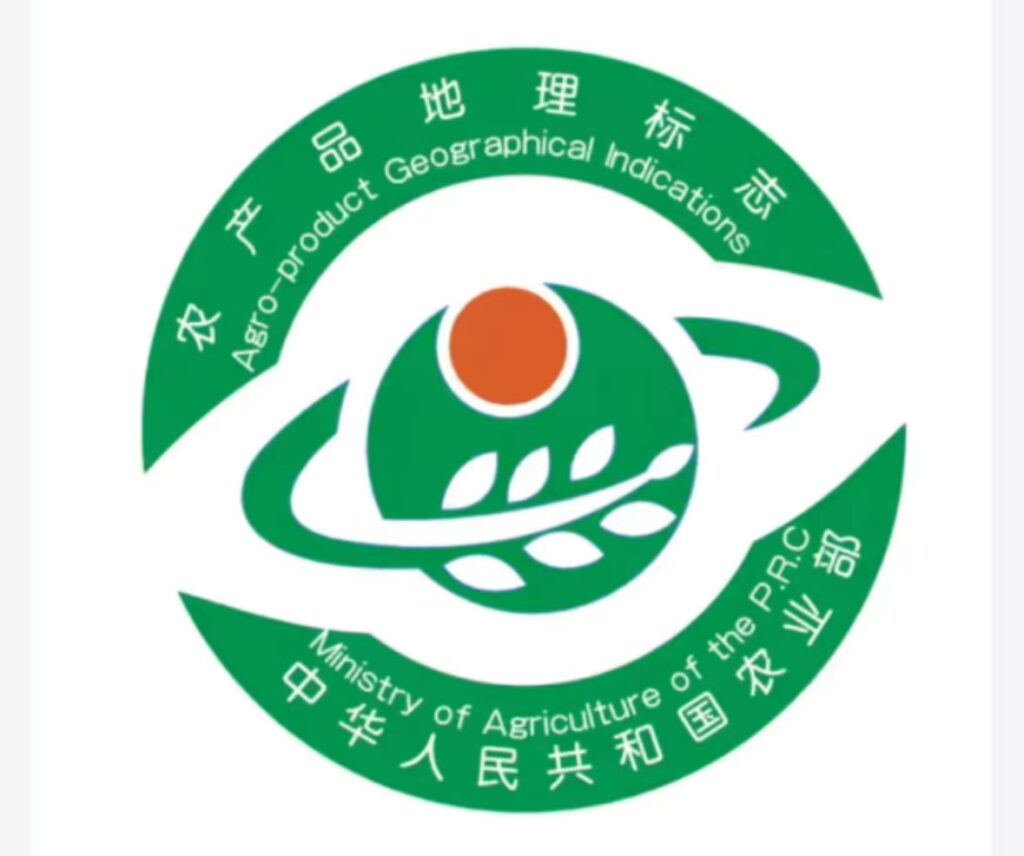

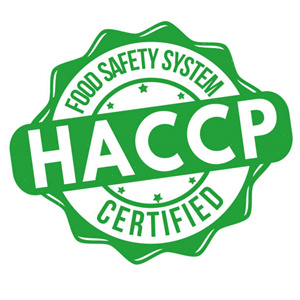
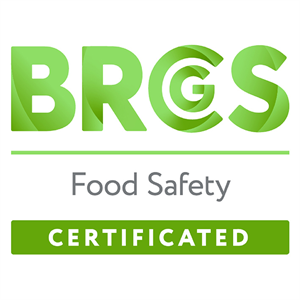
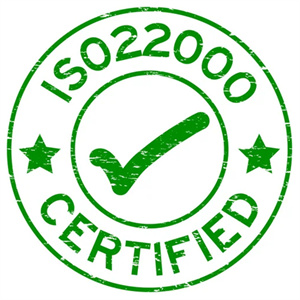
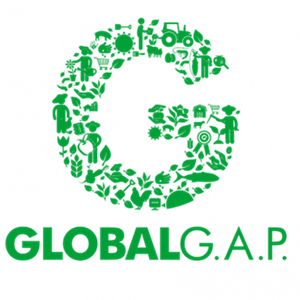
- Komitmen yang Teguh terhadap Kualitas: Di CAIE, kualitas tidak bisa ditawar. Bawang putih kami dibudidayakan di lebih dari 10.000 hektar lahan pertanian milik perusahaan di Jinxiang County dan Kota Weifang, mengikuti standar internasional tertinggi, termasuk standar Uni Eropa, Jepang, dan A.S. Mulai dari analisis tanah dan pemilihan benih hingga penanaman dan pemanenan, kami mempertahankan kontrol yang cermat pada setiap tahap produksi untuk memastikan kualitas dan konsistensi rasa yang luar biasa.
- Pasokan & Kapasitas yang Dapat Diandalkan: Dengan operasi pertanian kami yang luas, fasilitas penyimpanan modern seluas lebih dari 100.000 meter persegi, dan tim logistik yang berdedikasi di Zona Perdagangan Bebas Weifang, CAIE menjamin pasokan bawang putih yang konsisten dan dapat diandalkan untuk memenuhi permintaan pengolah makanan terbesar sekalipun. Kami menawarkan ukuran pesanan yang fleksibel, waktu tunggu yang kompetitif, dan kapasitas untuk menangani pesanan skala besar secara efisien.
- Keahlian Bawang Putih & Solusi Khusus: Didukung oleh tim ahli pertanian dan divisi perdagangan luar negeri dengan pengalaman lebih dari 20 tahun, CAIE memberikan keahlian yang tak tertandingi dalam varietas bawang putih, bentuk, dan kesesuaiannya untuk aplikasi pengolahan makanan tertentu. Kami bekerja sama dengan klien kami untuk memahami kebutuhan unik mereka dan mengembangkan solusi yang disesuaikan, mulai dari mencari jenis bawang putih tertentu hingga menyediakan opsi pemrosesan dan pengemasan khusus.
- Sumber Daya yang Berkelanjutan & Etis: CAIE berkomitmen terhadap praktik pertanian yang berkelanjutan dan sumber yang etis di seluruh rantai pasokan kami. Kami memprioritaskan metode pertanian yang bertanggung jawab terhadap lingkungan, praktik ketenagakerjaan yang adil, dan transparansi dalam operasi kami. Dengan memilih CAIE, Anda tidak hanya mendapatkan bawang putih premium, tetapi juga mendukung perusahaan yang sejalan dengan nilai-nilai Anda.
- Pendekatan Kemitraan & Fokus pada Pelanggan: Di CAIE, kami percaya dalam membangun kemitraan jangka panjang dengan klien kami berdasarkan kepercayaan, transparansi, dan kesuksesan bersama. Tim dukungan pelanggan kami yang berdedikasi selalu siap menjawab pertanyaan Anda, mengatasi masalah Anda, dan memberikan dukungan berkelanjutan untuk memastikan kepuasan Anda sepenuhnya.
Membuka Kunci Sukses dalam Perdagangan Bawang Putih
Mengimpor bawang putih untuk distribusi grosir adalah perjalanan yang penuh dengan tantangan dan penghargaan. Ini adalah tarian yang membutuhkan ketangkasan, pengetahuan pasar, dan apresiasi mendalam terhadap umbi pedas ini yang menambahkan begitu banyak rasa ke dunia kita. Dengan memahami seluk-beluk sumber, peraturan, logistik, kontrol kualitas, dan dinamika pasar, Anda dapat menavigasi industri yang penuh cita rasa ini dengan percaya diri dan menikmati manisnya kesuksesan.
